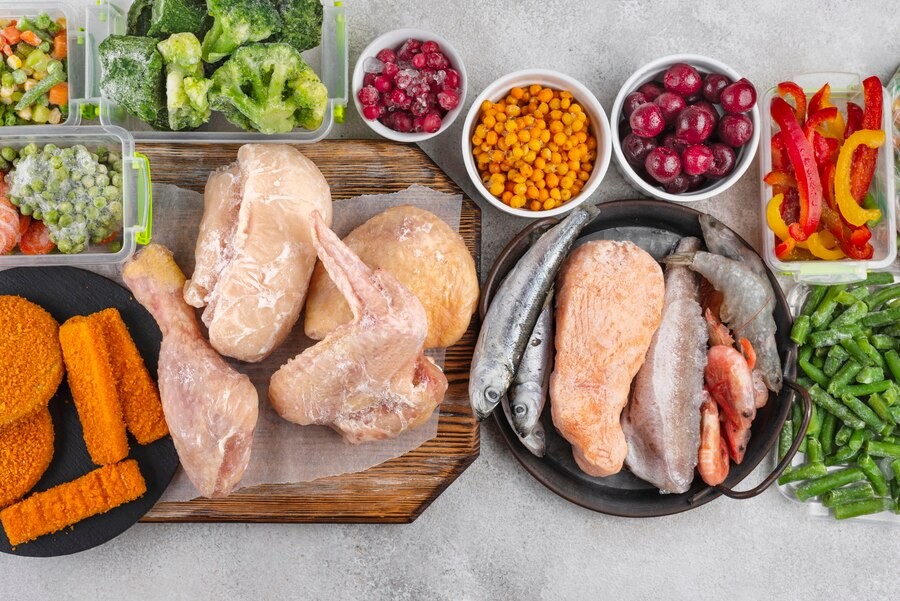Lemak adalah salah satu jenis nutrisi yang penting bagi tubuh. Selama ini lemak dipandang sebagai sesuatu yang negatif karena dapat menyebabkan peningkatan berat badan dan masalah kesehatan seperti penyakit jantung. Namun, perlu diketahui bahwa selama tidak belebihan, tidak masalah untuk mengonsumsi makanan yang mengandung lemak. Selain itu tidak semua lemak itu buruk, ada pula lemak baik yang bermanfaat bagi tubuh.
Jenis-Jenis Lemak Makanan
Secara umum, ada empat jenis lemak makanan yang memiliki sifat dan dampak berbeda bagi kesehatan, di antaranya:
Lemak jenuh
Lemak jenuh adalah lemak yang bisa berubah menjadi padat di suhu ruang dan biasanya ditemukan dalam produk hewani seperti daging sapi berlemak, sosis, daging burger, babi, produk unggas, produk susu yang berlemak atau full-fat, telur, minyak kelapa dan minyak sawit, serta makanan olahan. Mengonsumsi lemak jenuh berlebihan dapat meningkatkan kadar kolesterol jahat (LDL) dalam darah dan bisa meningkatkan risiko penyakit kardiovaskular seperti masalah jantung dan stroke.
Untuk menjaga kesehatan jantung dan mengurangi risiko penyakit jantung, disarankan untuk membatasi konsumsi lemak jenuh. AHA merekomendasikan agar lemak jenuh tidak dimakan lebih dari 13 gram per harinya.
Lemak trans
Lemak trans adalah jenis lemak yang dianggap paling tidak sehat dalam makanan dan bisa memberikan dampak buruk bagi kesehatan. Lemak trans meningkatkan kadar kolesterol jahat (LDL) dalam darah dan sekaligus menurunkan kadar kolesterol baik (HDL). Oleh karena itu, konsumsi makanan yang mengandung lemak trans bisa meningkatkan risiko penyakit jantung, stroke serta diabetes tipe 2.
Bila Anda melihat partially hydrogenated oil (PHO) tertera pada kemasan makanan, maka makanan tersebut mengandung lemak trans. Sebagian besar lemak trans ditemukan dalam makanan olahan dan makanan cepat saji, seperti kentang goreng, gorengan, adonan kua yang didinginkan, kue, pie, donat, popcorn, pizza beku, margarin stik dan lain sebagainya.
American Heart Association merekomendasikan agar konsumsi lemak trans tidak lebih dari 5-6 persen kalori harian tubuh untuk menurunkan risiko penyakit jantung dan kolesterol tinggi.
Baca Juga: Waspada, Sering Makan Gorengan dapat Menyebabkan Perlemakan Hati (Fatty Liver Disease)
Lemak tak jenuh tunggal
Lemak tak jenuh tunggal adalah jenis lemak yang memiliki satu ikatan karbon tak jenuh dalam molekul lemaknya. Biasanya lemak jenis ini berbentuk cair pada suhu ruangan tetapi dapat menjadi padat saat didinginkan. Contoh makanan yang mengandung jenis lemak ini misalnya saja minyak zaitun, minyak canola, alpukat, kacang-kacangan seperti almond atau hazelnut, dan lain sebagainya.
Lemak tak jenuh tunggal dapat membantu menurunkan kadar kolesterol LDL dalam darah dan memelihara kadar HDL yang normal, yang bagus untuk menurunkan risiko penyakit jantung. Namun, Anda juga harus memperhatikan pola makan Anda. Bila konsumsi lemak jenuh Anda tetap tinggi, maka efek ini tidak akan terlalu terlihat.
Lemak tak jenuh ganda
Lemak tak jenuh ganda adalah jenis lemak dengan banyak ikatan kimia tidak jenuh yang tetap cair baik di suhu ruang dan di suhu rendah. Jenis lemak ini juga memiliki dampak positif pada kesehatan. Terdapat dua jenis lemak tak jenuh ganda, yaitu asam lemak omega-6 dan omega-3.
Tubuh tidak bisa menghasilkan lemak tak jenuh ganda, sehingga Anda perlu mendapatkannya dari makanan. Lemak tak jenuh ganda banyak ditemukan dalam ikan yang berminyak seperti sarden, ikan kembung, salmon dan ikan herring. Selain itu, jenis lemak ini juga terdapat pada sayuran hijau, kacang-kacangan dan biji-bijian.
Selain baik untuk kesehatan jantung, lemak tak jenuh ganda juga membantu menurunkan kadar lemak trigliserida dalam darah. Jenis lemak ini juga bisa meningkatkan kesehatan otak, sendi dan mata.
Baca Juga: Bahaya Lemak Viseral bagi Tubuh dan Cara Menguranginya
Lemak yang Paling Baik Dikonsumsi
Mengonsumsi makanan yang tinggi kalori dapat menyebabkan penambahan berat badan atau kelebihan berat badan. Konsumsi makanan yang tinggi kadar lemak jenuh atau lemak trans juga dapat meningkatkan risiko penyakit jantung dan stroke. Dari jenis lemak di atas, lemak yang paling baik untuk dikonsumsi tentu saja lemak tak jenuh tunggal dan lemak tak jenuh ganda. Anda disarankan untuk tetap memiliki pola makan yang cukup nutrisi dan kalori agar berat badan yang sehat tetap terjaga.
Menurut WHO, total asupan lemak yang dikonsumsi sebaiknya kurang dari 30% dari total asupan kalori sehari-hari. Asupan lemak jenuh harus kurang dari 10%, dan lemak trans kurang dari 1% dari total asupan kalori sehari-hari. Dengan demikian, asupan kalori tetap seimbang dan dapat mencegah penambahan berat badan yang tidak sehat.
Memiliki pertanyaan terkait asupan lemak yang sesuai dengan kondisi tubuh Anda? Manfaatkan layanan konsultasi kesehatan dengan mengunduh aplikasi Ai Care melalui App Store atau Play Store.
Mau tahu informasi seputar nutrisi, makanan dan tips diet lainnya? Cek di sini, ya!
- dr Hanifa Rahma
Tim Newman (2023). Types of fat: Can fat be good for you?. Available from: https://www.medicalnewstoday.com/articles/141442
WebMD (2022). Types of Dietary Fats. Available from: https://www.webmd.com/diet/types-fat-in-foods
American Heart Association (2021). Dietary Fats. Available from: https://www.heart.org/en/healthy-living/healthy-eating/eat-smart/fats/dietary-fats
Mayo Clinic (2022). Trans fat is double trouble for heart health. Available from: https://www.mayoclinic.org/diseases-conditions/high-blood-cholesterol/in-depth/trans-fat/art-20046114
American Heart Association (2021). Saturated Fat. Available from: https://www.heart.org/en/healthy-living/healthy-eating/eat-smart/fats/saturated-fats
American Heart Association (2023). Monounsaturated Fats. Available from: https://www.heart.org/en/healthy-living/healthy-eating/eat-smart/fats/monounsaturated-fats
Roma Kunde (2021). What to Know About Polyunsaturated Fat. Available from: https://www.webmd.com/diet/what-to-know-about-polyunsaturated-fats












